Disclosure: We may earn commissions if you purchase products after clicking on a link from our site.
Do you hunt for elks? Would you like to read the best elk hunting tips? Do you need to improve your elk-hunting skills? Hunting elks is no walk in the park. It involves thorough scouting, planning, and implementing strategies and techniques. With the best elk hunting tips, you can have a successful hunting season and have the meat you need for your home.
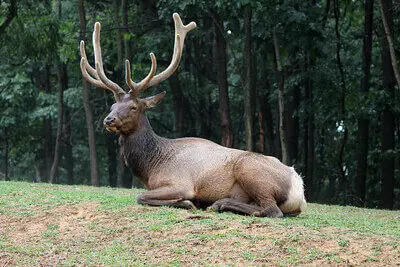
Best Elk Hunting Tips
1. Field-Judging a Bull Elk
You can quickly decide if an elk is trophy-worthy by studying the quality of its antlers. First, you want to see how many points it has. If it has six or more points, it is a trophy elk. Next, you study the length of each antler’s beam.
If the beam is of a length that it appears that it can scratch its rear with the tips of its beams, then that is a good sign. Lastly, its brow tines should reach out over its muzzle.
2. Set Up A Trail Camera
Set up a trail camera to observe the behavior and patterns of elk on public land. Most often the elk will be pressured on public land due to all of the activities going on by other hunters in the area.
A trail camera will be your additional set of eyes that will give you more to help you track and get a bull. You will learn the best times to hunt them and much other valuable information about their behavior. We reviewed the best trail cameras on the market and you can read it from this link.
3. Scouting for Elk
Don’t make the mistake of scouting elk like you scout deer. Elks don’t behave like regular whitetail deer and that scouting method doesn’t work for elks. Rather than focusing on elks’ normal behaviors, find out where they go when spooked by the presence of hunters.
They react very quickly to hunting pressure and this pressure is often increased in the days leading up to the first day of the season. Keep your eyes open for heavy blowdown cover on steep slopes that are close to meadows surrounded by thick timber. If you want to improve your hunting with the best whitetail deer hunting tips, then read this article.
4. Spot & Stalk
This strategy is popular with hunting elk. It can be used all season and employing it early in the season is good. Be at a high vantage point and use your binoculars. A spotting scope can also be used to pinpoint trophy bulls. Early in the season, many bulls will be at a high elevation to benefit from the cooler temperature and avoid insects.
Glass over the terrain early and late in the day above the timberline or in shadowy clearings below the treeline. Once you spot a bull you want, then apply the spot and stalk strategy. Take off your shoes and walk in your socks. Be very mindful of the wind as your circle in on the bull. You can learn about the best spotting scopes available today when you read this review.
5. Don’t Let Elk Spot You Twice in the Same Spot
If an elk stops chewing and stares at your position, do not instinctively stop all movement and remain motionless. Instead, the best option is to slowly lower yourself to the ground.
Stay in that position as long as it takes, then crawls into a new position before you raise your head. The elk will still be monitoring the spot even if it was not spooked. This is one of the best elk hunting tips to remember when elk hunting.
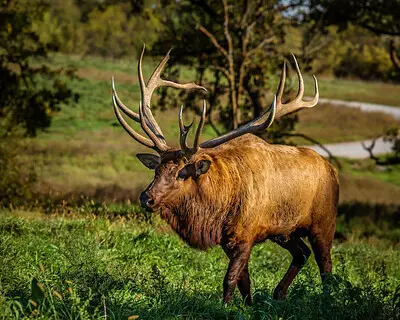
6. Your Attitude Makes A Difference
Don’t think you will walk into the forest and hit a bull in your first 3 hours. It is not impossible but not very likely. Sometimes it will be easier to get a bull while other days, you will just not be lucky despite all your skills, hunting knowledge, and hunting tips you apply. On those days, you will have to dig deep, not give up, and continue to push yourself.
Your attitude, like in almost everything in life, will be the deciding factor if you take a bull home or not. You will have to push yourself harder each time you don’t succeed. Adopting a “do-whatever-it-takes? attitude is very important to being successful with elk hunting. If you are also interested in hunting caribou, then read the best caribou hunting tips.
7. Best Place to Shoot an Elk with a Bow
The best place to shoot and quickly kill an elk if you are bow hunting is behind its shoulder, thereby piercing the heart of the lungs. Other shots like neck and shoulder shots are not the shots to take.
8. Hunting Transition Zones
It is a good strategy to hunt transition zones between feeding/water and bedding. Always remain mobile as the elk move and try to position yourself in their path as you keep the wind in your favor. Elk try to keep the wind in their favor and this may force you to move from the side. You can achieve a lot of success with hunting transition zones; it is one of the best elk hunting tips to implement.
9. Hunting in Grizzly Country
Grizzly bears have learned that the sound of a rifle shot into the meat of an animal. If you’re hunting in the Rocky Mountain West, it is good to take a friend with you when you go to recover your catch. Make a lot of noise and let your friend be watching out for any sign of bear activity while you dress the catch.
10. Water Holes
Keep your eyes open for water holes and wallows. Elk get water many times during the day. Hunting water holes and active wallows could reward richly. Hunting treestands and ground blinds work well adjacent to water holes and wallows. Observe the prevailing winds and thermals, especially in the mornings and afternoons when thermals become unpredictable. If you are interested in climbing treestands, you can read about the best climbing treestands in this article.
11. Don’t Spot Elks With Your Rifle Scope
Use your binoculars or a spotting scope to locate elk activities. Don’t use your hunting riflescope to spot your targets as you run the risk of pointing your rifles at other targets than elks such as other hunters or others who may be moving in your target range.
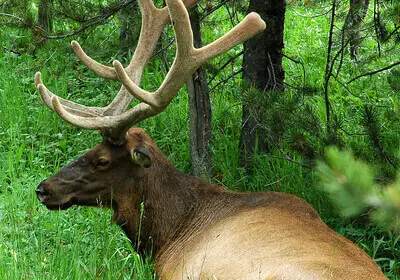
12. Physical Conditioning
This is an elk-hunting tip for beginners as well as experienced hunters. Your physical condition is very important. You want to get in shape for the hunting season. It may not seem important or you may think that your physical condition is “not bad”. But it is something that you should take seriously and improve.
You will encounter rough and harsh terrain and will have to cover much ground at a good pace to keep up with your target. How good your physical condition is can be the deciding factor in a successful hunting season or failure.
13. Don’t Celebrate Early
Don’t engage in a wild celebration after landing an arrow into a bull elk. He may be unaware of the shot as they are often rooted and poked by other elk during the rut. Remain quiet and wait for a few minutes. The elk may walk for some yards, lie down, bleed, and die.
14. Friends & Foes
Although bulls may have been bitter rivals just a few months ago, it’s not surprising to see them become buddies in bachelor groups after the rut. When you are searching for a bull, when you spot one, there’s a high chance that there may be others in that group. Don’t disregard the small raghorn bull you spotted. Carefully study the landscape for other bulls that may not be very far.
15. Hunting Before Bad Weather
Elk and deer eat heavily in preparation for bad weather. They have the ability to know when bad weather is just around the corner and prepare for it. Therefore, monitor the weather conditions and schedule to be at the hunting ground a few days before a big storm and you just might be rewarded. You can read about how to deer hunt in ground blinds in this article.
16. Learn Elk Behavior
Bulls isolate themselves from cows in late October to recover from the rut and to gain more weight before winter sets in. You can use this knowledge to hunt elk. Start your search in remote and rugged areas where the likelihood of bulls encountering humans is very slim. Canyons and other pockets with a bare-facing slope or windswept ridge top are areas to focus on.
Additionally, also concentrate on a north-facing slope with some cover. Moreover, when the snow has fallen, focus on bare south-facing slopes in the morning and evening and tree-covered north-facing slopes in the middle of the day. They will feed longer in the mornings, evenings, and mid-day to put on the weight lost during the grueling rut.
Learning elk’s behavior, or the behavior of any animal you hunt will only make you a better hunter. If you don’t implement any of these elk hunting tips, implement this as it is actually one of the best elk hunting tips to increase your chances of successfully hunting elks.
17. Varmint Hunting Practice
Prepare for elk hunting by practicing varmint hunting. You should be comfortable taking shots of 300 yards and longer, especially if your elk hunt is in the American West. Varmint hunting allows you to practice at distances such as 300 yards or more. If you can regularly and accurately hit a target the size of a woodchuck at 300 yards, then you won’t have much problem hitting an elk at 300 yards or more.
18. Embrace Aggressiveness
Be more aggressive in hunting elk according to Royle Scrogham. He suggests that if a bull is bugling but is not moving toward you, you should move closer to him and reduce the distance between the two of you. Don’t keep at the 300 yards distance just because you can hit at that range. Scrogham likes to get the help of a friend to keep bugling while he moves closer to the bull.
He mentions that as long as the bull is bulging, he hasn’t seen you; keep moving. Move slowly and be attentive. Pay close attention to the direction of the wind and the thermal conditions. Take along a wind puffer bottle.
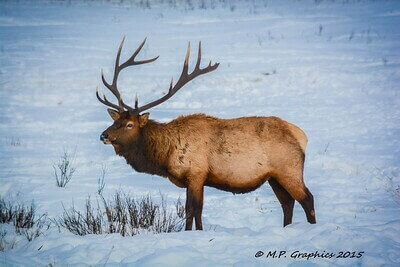
19. Securing The Elk’s Carcass
If an elk that you shot drops on the side of a steep slope, always secure the carcass to a solid anchor using a tree trunk. If it slides downhill, the meat gets damaged in the process or you will have to work hard to retrieve it.
20. Multiple Shots
If you hit a bull but he is still standing, hit him with another shot. You don’t want to track him down over a couple of miles in the open country. Don’t hesitate to hit him with multiple shots if that is what it will take for him to drop.
21. Still-Hunting Elks
Still-hunt early morning and late afternoon when elks are moving from meadows and clearings. Don’t still-hunt during midday when they are bedded down in thick cover.
22. Hunt New Areas
Many hunters play it safe by remaining close to their camp or staying in their hunting location even if they can’t find elks there. Move to another area and keep moving to new areas until you find elks. A good GPS and a good SOS system will be good for this strategy.
Additionally, pay close attention to where other hunters are hunting. Take note of where they are parking at trailheads and take a look at a map. Many hunters won’t go far from a trailhead or logging road. Pressured elk will move to thick, dense, and nasty terrain. Find this type of terrain and quietly go in.
23. Learning From Elk Trails
You can glean some information about an elk by studying its trials. If the track of a lone elk avoids low-hanging branches, chances are it is a bull steering its antlers clear of obstructions. Big bulls always travel in pairs and you can follow their tracks. However, if you come across one large track and a smaller one, avoid them as it could be a cow and its calf.
You can also determine the maturity of a herd by the number of members in it. If you come across small bands of five or six elks, chances are they are not mature bulls. On the other hand, if the herd contains ten or more, it is a good possibility that a mature elk is in that group.
24. Bugle Louder Than The Bull
In the early season on public land, Jim Brennan states that you should bugle louder than the herd bull. He mentions that herd bulls over to hear the sound of his voice across the land. When the bull starts to bugle, you should bugle right away over his. This will get him unhinged as he doesn’t want another bull interrupting his fall courtship.
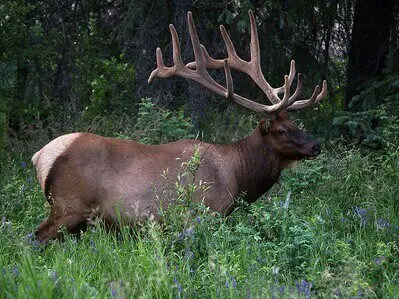
25. Elk Afternoon Ambush
If you see an elk feeding early in the day but is far away for you to take an accurate shot, don’t forget about it. Elks leave their feeding areas to bed in cover during the day and they will return to feed during the late afternoon. When they leave for cover, use that time to set up for a better shot.
Set up at the edge of the clearing downwind where they should come and wait patiently. Don’t use or cross the route they took when they left because they might use the same route to return.
26. Socks Stalking
Take extra pairs of socks with you when you go bow hunting for elks. When you spot a bull and need to move silently into the shooting range, take off your shoes and put on extra pairs of socks to cushion your steps and protect your feet on the ground. This will allow you to plant your feet quietly and also adjust your foot placement.
27. How To Stop Startled Elk
By imitating the sound of a barking cow, you can stop a spooked herd of elk. A cow will bark when it is alarmed and elk in that area will stop and watch the cow until it has identified the danger and run away. The elk will follow the cow to get out of the area. You can use that time to take a shot at your target.
28. Magnification For Your Rifle Scope
High-power riflescopes decrease your field of view making it hard to pick up moving targets. Be wary of using high-power magnification scopes. A rifle scope with a 4 or 5-power magnification is adequate enough for hunting elks.
29. Quickly Skin Your Elk
After taking down an elk, quickly quarter and remove its hide. If you don’t remove the hide, its body will maintain the heat and that will take away its flavor.
30. Bootless Hunting
When you stalk elk or mule deer in rocky terrain, it is a good tactic to take off your shoes when you are within 100 yards of your target. This will make you silent on rocks and hard ground. Going without shoes will get you as close as you can possibly be to getting a good shot.
31. Late Season Bulls at High Elevation
You can find groups of older bulls at higher elevations late in the season when there is deep snow and open terrain. Search and find where they feed and bed. Then set up a stalk.
32. The “Whippersnapper” Elk Call
Use higher, more shrill tones if you are calling a herd bull. It mimics the call of an immature bull. If the bull thinks it’s a call of a young whippersnapper, he may just run over to give the young whippersnapper a beating.
33. Slopes to Hunt
T.R. Michels of the Elk Addicts Manual states that northeast slopes are heavily used in the summer and early fall as they keep more moisture and provide forage for the animals to feed on. South-facing slopes are used twice as heavily in winter as north-facing slopes because of the solar energy that melts the snow and reveals the forage.
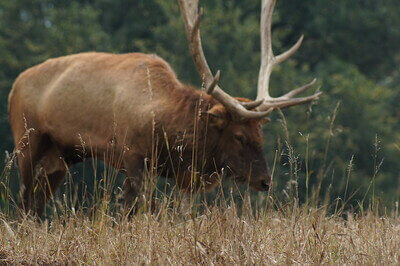
34. Check Grazing Schedules
Before you plan a hunting trip on public grazing land, contact the local BLM or U.S. Forest Service office and find out if any livestock is scheduled to rotate into the area. You don’t want to arrive there only to find out the rotation has livestock there that are not what you are out to hunt.
35. How to Recognize Elk Tracks
It is important that you learn an elk’s track and know how to correctly identify it. Elk tracks resemble very large deer tracks and a mature bull’s tracks are larger than a female or young one’s tracks. Cow tracks are rounded and don’t look like the tracks of a deer. Moose tracks are longer and narrower than elk tracks.
36. Elks In Lowlands
Elks that are in the lowlands will move up the mountains to avoid hunters. With this knowledge, you can set up passes or saddles that they cross to get to higher elevation areas.
37. How to Rile An Elk’s Temper
While bugling for an elk and he refuses to respond, tries aggravating him by running towards him. As you move towards him, continue bulging and breaking off trees in your path. The sound of the challenge might be the tipping point that causes him to come out of his position. Always be downwind of the elk and be screened from view.
38. Finding Elks After Bad Weather
You won’t easily find elks feeding in the open during midday. However, after bad weather, you might find elks feeding heavily in open areas for a number of hours.
39. Set Up On Northern Slopes
North slopes have more trees than south slopes and elk will go to them when it is hot and cold. North slopes are good to set up a tree stand for elk. Search for trails that lead from slopes toward open parks and meadows. Be in your stand at sunrise and sunset when elks will be returning or leaving these feeding areas. You can learn how to hunt from a treestand from this article.
40. Gathering Elk Hunting Intel
In some Western states, you can easily find elk hunting opportunities close to accessed roads. You can collect a lot of hunting information from local people who operate bed and breakfast motels in those hunting areas. Consider staying at one as you might just benefit from local hunting information from those folks.
41. Moving Elk in Hot Weather After Rainfall
Elks don’t move about much during the day when it is hot. They will rather feed at night. Early morning is the best time to look out for them but they can also be spotted looking for something to eat right after it rains.
42. Elks & Hot Weather
Elk will shelter in forests of mature evergreens with few low branches during hot weather. The forest canopy provides cover for the elks from the sunlight and the open understory brings in the cool breeze.
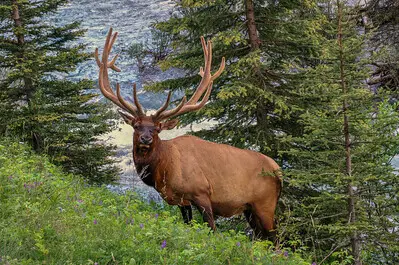
43. Bulls And Muddy Wallows
Bulls like to roll in muddy wallows. They will often return to the muddy wallow often. If you find a muddy wallow, set up a treestand close by to target them.
44. Best Time Elk Bugle
T. R. Michels, the author of Elk Addicts Manual, states that the best time to hear an elk bugle is in the morning from 45 minutes before to 45 minutes after sunrise. It peaks within a half-hour of sunrise. But on cloudy days, bugling increases and peaks later than normal.
45. Smoky Fire Strategy
If you kill an elk far away from the road, you may have to make more than one trip to pack the meat. To keep coyotes, wolves, bears, and other predators away from your catch is to build a small, smoky fire from damp wood.
Predators will be put off by the smoke and you can also use the rising smoke to quickly locate your catch. Only employ this strategy where it is safe and legal and don’t leave a fire untended in dry conditions where it can quickly spread.
46. Thick Timber Near Roads
Look for elk in thickly forested terrain near an open road where animals will go to seek cover and security. Look for a mature forest with a thick upper canopy and a dense understory of young trees and shrubs. If you find fresh tracks leading to these areas, that’s a good sign and you can still hunt there.
47. Too Much Bugling
Bugling is not hard to do with commercial calls today. Bugling is the most overused call for elks. Don’t rely heavily on bugling. Instead, just bugle to locate an elk and then employ other calls like cow calls or imitate the sounds of raking antlers to pull him in.
48. Bulls & Cow Calls
If you are hunting in an unfamiliar area, softly blow on a cow call every few minutes while you move through the woods. Rutting bulls will bugle in response. If one bull bugles, continue calling while you quietly move in his direction and break a branch or two along the way.
It will give him the impression that it’s a new cow in the area and she is receptive to him. Once you are sure his interest is heightened, set up the cover with a good view of where you think he will appear.
49. Roaded vs. Roadless Areas
According to Sam Curtis, from www.fieldandstream.com, hunt a mile from open roads and half a mile from closed roads. He states that roadless areas may have twice as many bulls as roaded terrains.
50. After Felling A Bull
Give a bull ample amount of time to bleed out after you took him down. An hour is a good amount of time, but an hour and a half are better. While a fatally wounded deer will lie down again when you have jumped him, a wounded elk will continue for some time before finally dropping dead.
51. Heavily Hunted Terrain
If the area that you are hunting in is heavily used by other hunters, calling an elk may not be the best thing to do. It will only attract more hunters and bulls that have been called in and spooked and will quickly learn and get smart to the calling. When you spot bulls, it is best to just stalk them.
52. Tagging A Called-In-Elk
It usually requires two hunters to call in a bull into bow range. One hunter will be the caller and the other, the shooter. The shooter will set up under a cover with a good view while the caller will set up about 20-30 yards upwind of the shooter. Bulls usually approach the caller by circling downwind, therefore they will appear in front of the shooter.
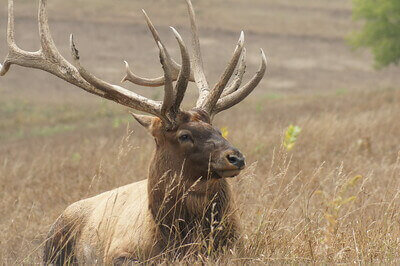
53. Elk Decoy Mistakes
Elks may be pulled into shooting range because of a decoy as they look for the source of your calling. However, the elk decoy can also warn them away if it is not used correctly. You have to make sure your scent is not left on the decoy. Always wear gloves when working with the decoy and spray them with a scent killer.
Additionally, be well camouflaged and not directly behind the decoy. The elk will approach, and he will be closely studying the decoy. Moreover, don’t place a bedded elk decoy in the middle of a trail.
54. Busted Herds & Call Backs
While still-hunting, if you flushed a herd of elk and it breaks up into multiple small groups, you can capitalize on the animals’ desire to regroup to call them to you. If they did not pick up your scent, they will slow down and monitor the situation from a few hundred yards away.
It is then the time to get out your cow call and softly blow it, imitating the sounds other cows make when they are regrouping. If a cow answers your call, answer back, and wait a few seconds. If this is done correctly, the elk will think you are part of the group and will slowly work back in your direction.
55. Elk Hunting In New Boots
Wearing new boots on a backcountry elk hunt gives you blisters, hot spots, and sore feet. Break your new hunting boots well before hunting season when you do outdoor chores like chopping wood, gardening, mowing the lawn, etc. We reviewed the best hunting boots and you can read it from this link.
56. Right Caliber For Elk Hunting
Many hunters come to the conclusion that they need a large caliber rifle to hunt elks since they are larger than deer; this is far from the truth. It is the thickness of the animal’s skin and not the size of the animal, that determines the caliber that you should use. Since elks don’t have thick skins, most experts agree that the minimum caliber one should use for elk hunting is .270. If you are interested in how to hunt deer with a crossbow, then click the link to read this article.
57. Approaching Bedded Elk
If you are following an elk’s tracks and it turns upslope, that could be a sign that the elk is ready to bed. Stop following the tracks and rather circle uphill remaining downwind of the trail and approach it where you think it has lain down from above.
58. Cutting A Fresh Track
If you are following the tracks of an elk through the snow, start early in the morning. Locate an open clearing where they may have been feeding at night. Those tracks may be difficult to follow but if you backtrack into the surrounding timber, you just might locate where their trails come together and you can spot a group to follow.
59. Aggressive Or Not Aggressive Bulls
You will have to figure out if a bull is aggressive or timid after it responds to your calling. If it is timid, you will have to move towards him quickly, getting as close as you possibly can so he does not have to travel far to get to you.
If it is an aggressive elk, you will have to set it up quickly as he could appear at any moment. Aggressive bulls also move quietly and don’t think you will hear them before he is so close that it makes it difficult to draw your bow.
60. Temporary Elk Beds
If you are following elk tracks and come upon the recently vacated bed, don’t get discouraged. Study the tracks that leave the area for signs that the elk was afraid or not. If the tracks indicate it was not afraid, chances are it is simply looking for a better place to bed for the day.
They often lie down a number of times on their way to a more favorable bedding area. It is highly possible that the favorite bedding area is not far away and moves slowly and be ready to shoot.
61. Birds Show The Way
If you have lost an elk or other target, look over the terrain where it may have gone and search for a concentration of birds. Eagles, crows, and magpies can help you locate your fallen target. They will often go to the carcass after a few hours after it falls to the ground dead.
62. Scent Control
Elks have a very good sense of smell. It is one of their defenses against predators. Be very mindful that your clothing will quickly absorb the scent of cooking food and a campfire. When you are in an elk camp, have clothing worn only for hunting and clothing for around the camp.
63. Scope The Area From Different Vantage Points
If you are looking for elks from one vantage point and don’t see any for some time, don’t write off the area as empty. Instead, scope the area from another vantage point to view pockets and basins where elk may be feeding that are not identified from the known path. This strategy is good for hunting on public land.
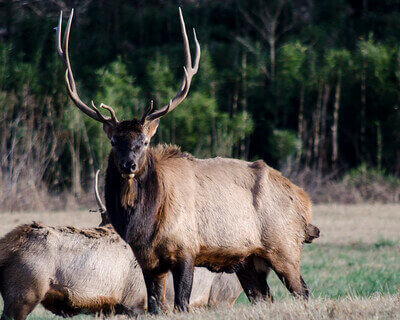
64. Last Resort Drive Set-Up
When you have no more time left or the elk have resorted to nighttime activities, then and only then should you resort to a drive. If you have discovered a pattern to the elks’ behavior like their feeding areas and times, setting up a drive will only disrupt the herd, and the knowledge you acquired through hard work will become useless.
If you have to perform a drive, know the direction in which the wind is blowing and set up your stand downwind of where you think it will be.
65. Spotting Scopes And Antler Management Areas
When hunting in antler management areas that limit your targets to bulls with specific point configurations, always bring a spotting scope. Additionally, also bring with you a binocular as it will help you quickly scan the area to locate an elk.
66. Shooting Sticks vs. Bipods
Use shooting sticks when hunting elk instead of bipods. It can quickly be set up for long shots that require a stable rest but quickly put to one side if an offhand shot is required. A bipod is good for varmint hunting but not the best for elk hunting. It snags brush easily and can affect the balance of your rifle if you need to shoot while kneeling against a tree.
67. Wet Meadows & Feeding Elk
When you are searching for feeding elk, always look at wet meadows. They often have forbs and sedges that are elk-like. If you locate wet meadows that are surrounded by thick timber, that is the best. Elks feel more secure feeding in wet meadows surrounded by thick timber and just might feed later in the morning than in less “secure” terrain.
68. Elks Too Close To The Road
It’s good to make your calls when you are far away from the beaten path. Don’t make the calls close to roads where the elk may be taking into consideration other factors related to the sound like roads, other sounds, scents, or human signs.
69. Clearings During The Day
Elks stay away from clearings during the day and come out to feed late in the evening. They remain bedded in thick cover near a water source when the sun is high. During the day, hunt in places where you think they will go because of the activities of other hunters.
The Bottom Line
The elk is one of the animals with well-defined habits. Hunting elks is very challenging and you will have to plan and implement tried and tested hunting strategies to have a successful elk hunt. Whether you are a beginner elk hunter or experienced, putting into action some of these elk hunting tips will help you get the bull you want at the end of your elk hunting trip.
